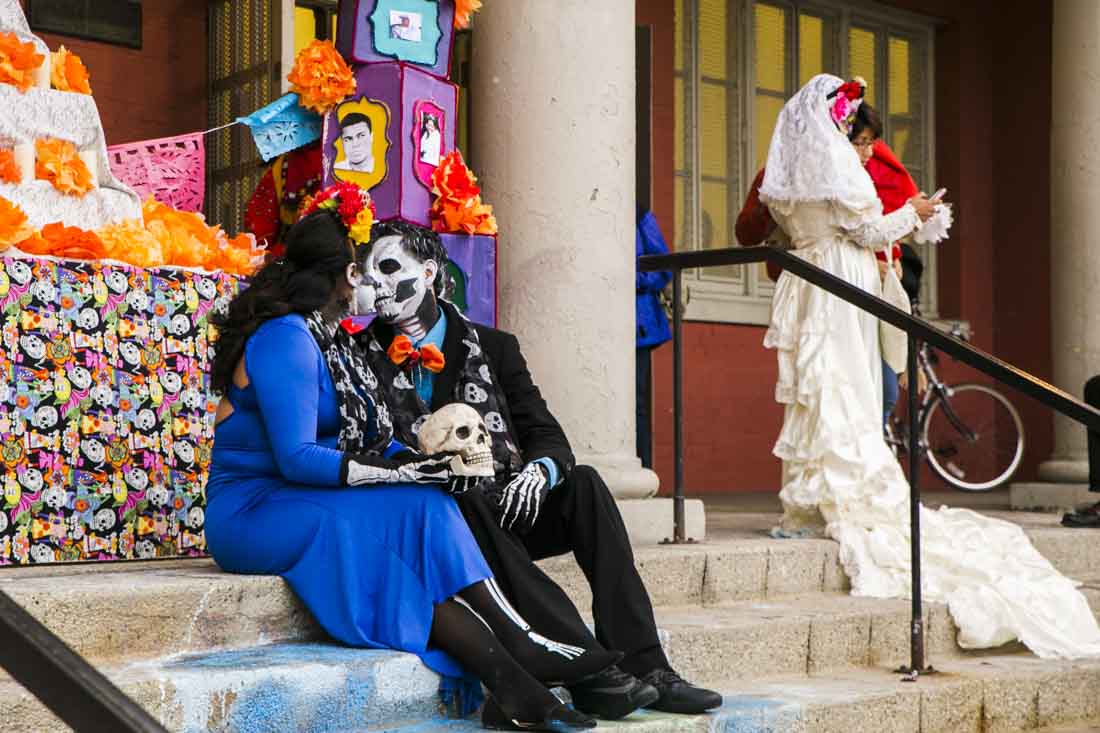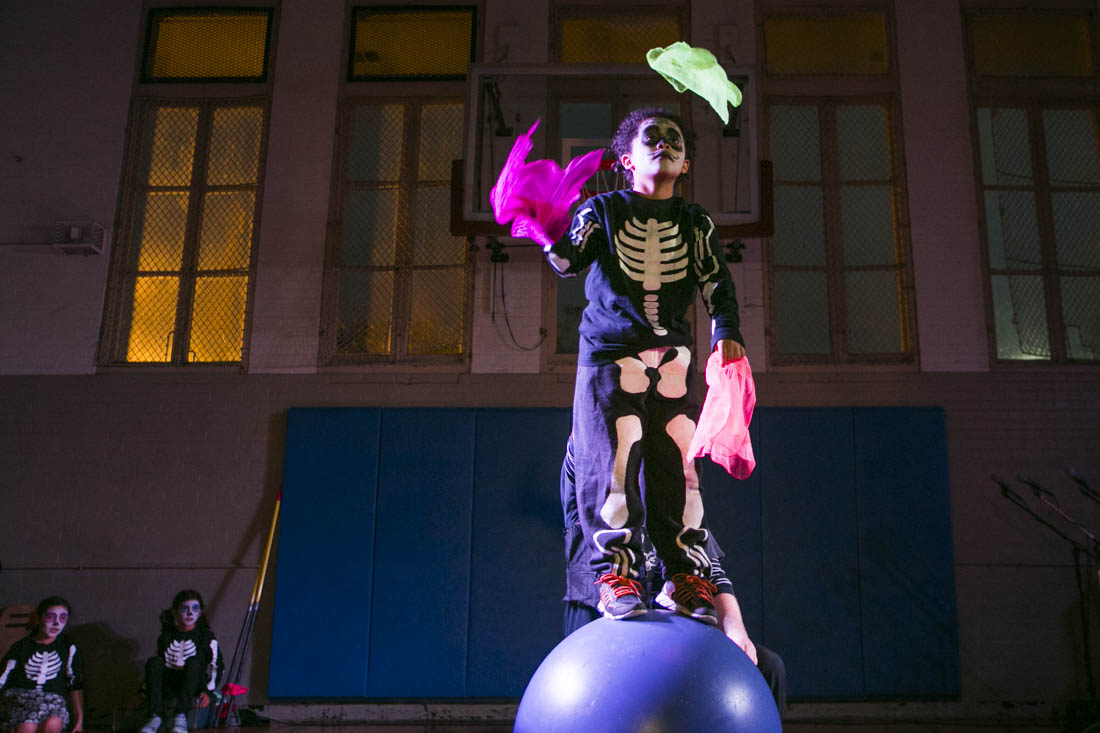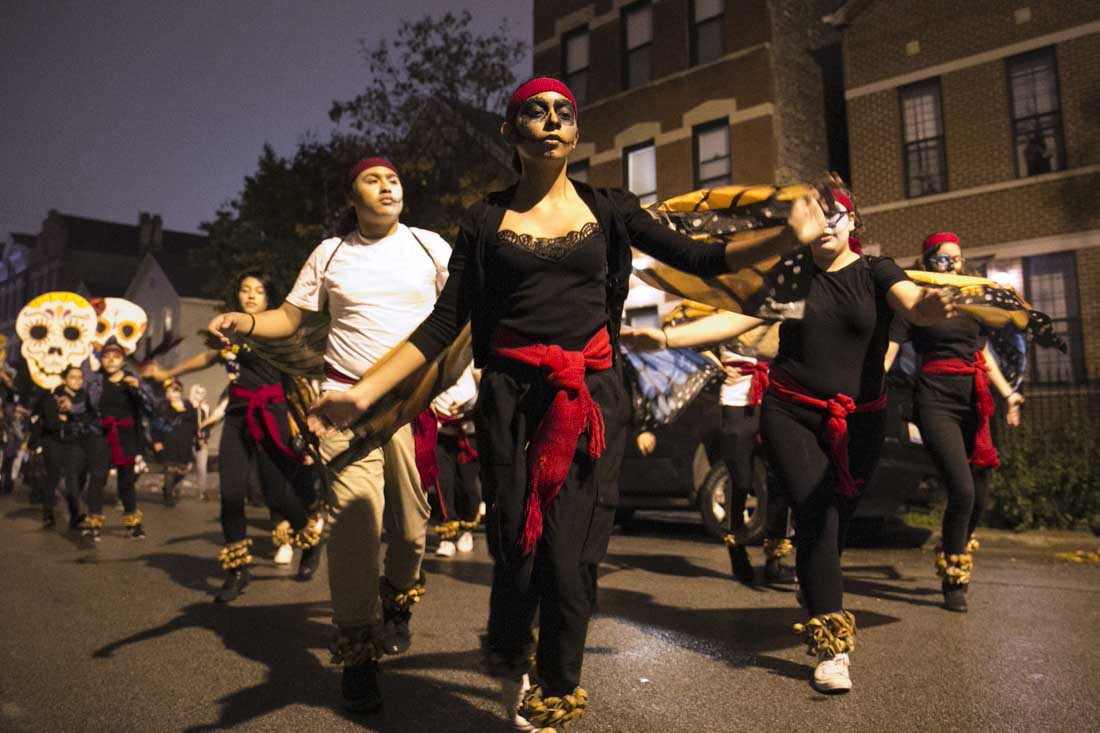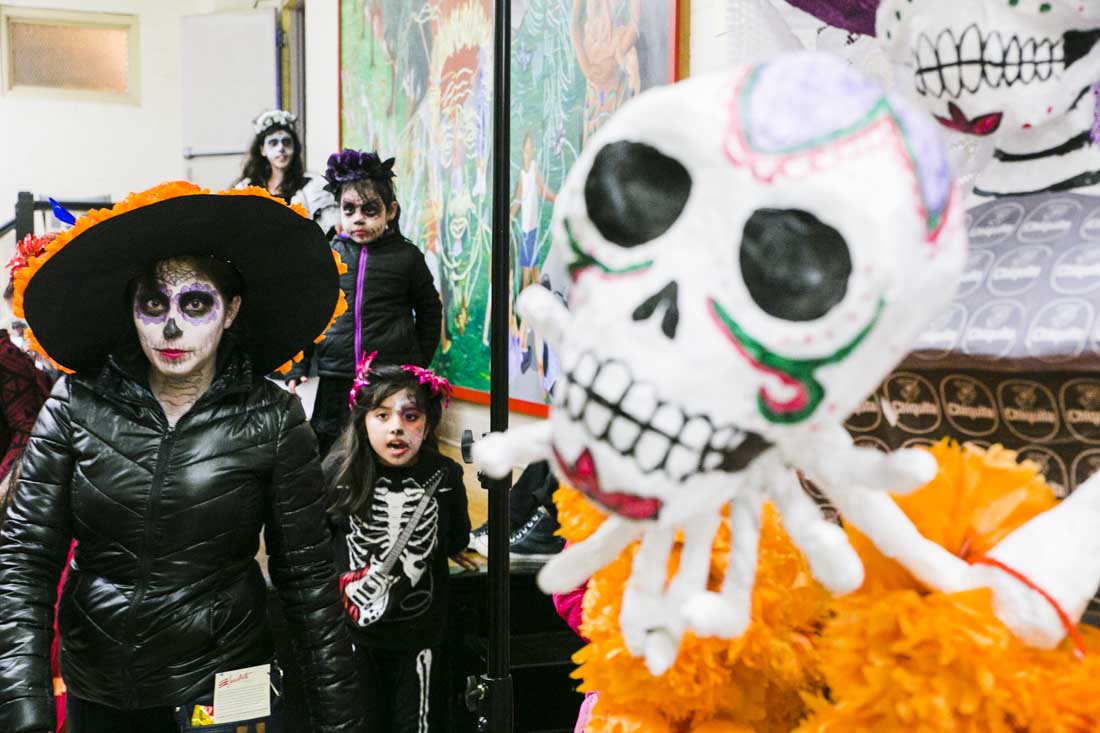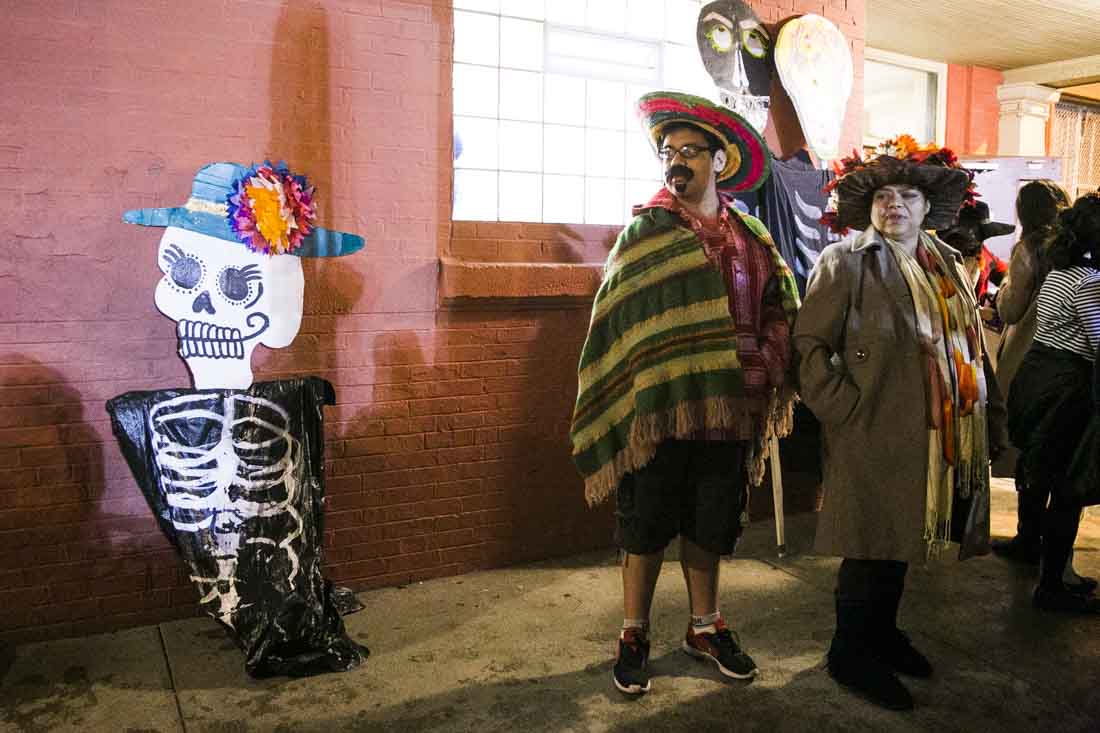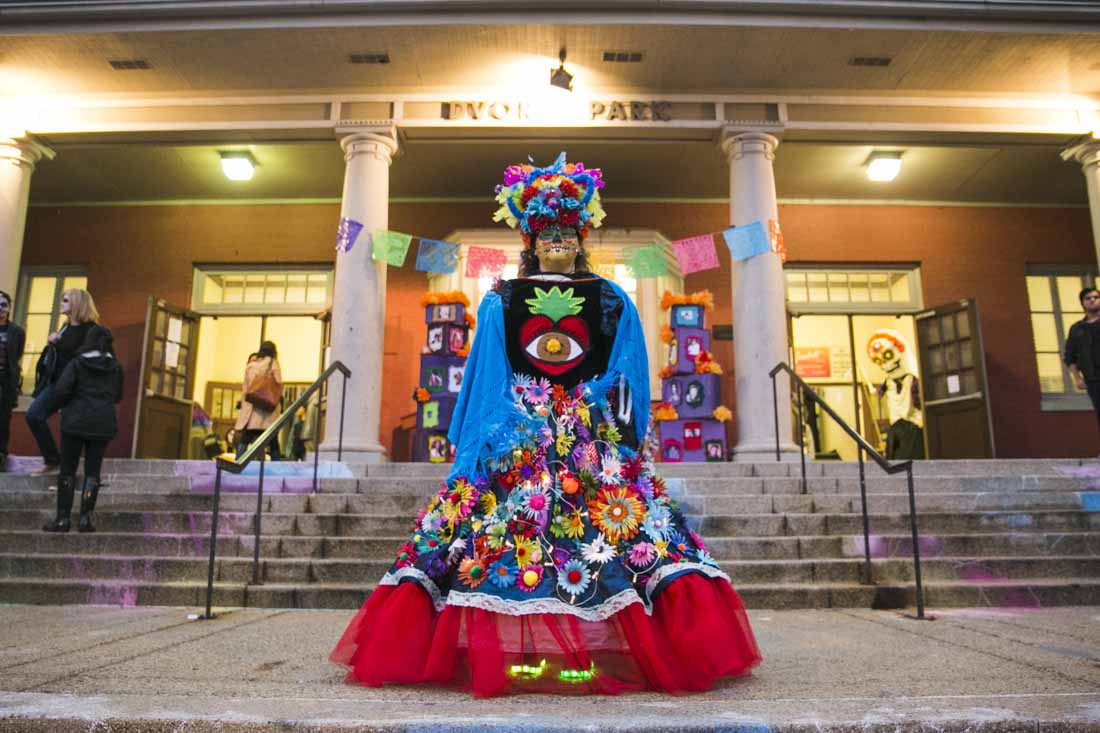By Pat Nabong
People with faces painted to resemble skulls and hair adorned with flowers marched around Pilsen on the night when spirits are believed to visit the living. Photos of deceased loved ones and famous human rights advocates embellished the “ofrenda” or altar. Under the rain, children twirled to the beat of drums.
Día de los Muertos, an annual tradition that dates back thousands of years to the Aztecs and originated in Mexico, brought people together in Pilsen, a predominantly Mexican neighborhood Pilsen for different reasons — some personal, some political.
View the gallery to see photos of the radiant pageantry at Día de los Muertos in Pilsen:
United by the belief that deceased loved ones come back to this world every year from November 1 to 2, many Latin Americans celebrate the Day of the Dead as a deeply personal and festive holiday that is rooted in each person’s family history.
In the middle of the procession was Sara Castillo, holding a picture frame on which more than 20 of her ancestors were listed. “In my family I’ve become the unofficial genealogist, so I thought it appropriate to just recognize all the people and the names I found,” said Castillo who is of Mexican descent but was celebrating the holiday for the first time. “I’m here just to honor them.”

The tradition of Día de los Muertos is also communal, an opportunity for people to come together. For Isabel Guytan, who moved to Chicago from Mexico, the Day of the Dead was also about finding comfort by being close to her fellow Mexicans. Although her ancestors are buried in Mexico, this was her way of still being in touch with them, said Guytan.

While Día de los Muertos is mainly a cultural and personal celebration, many people were also concerned with social justice issues. The event, organized by ElevArte Community Studio, an arts organization focused on youth development through art, was centered on unifying black and brown youth.
“There’s definitely an activist spirit that comes with the event, and of course when we’re talking about death, there’s different ways our community is affected by that,” said Thelma Uranga, communications coordinator of ElevArte Community Studio.
“Sometimes they (children) have friends that are gone too soon due to gang violence around the city, so we wanted to create a space for them where they can talk about that, where they can learn to celebrate the people that they love and be resilient,” said Uranga.

Members of the community were also able to write on an interactive “ofrenda,” which asked the question, “How can we love and support our youth?”
“We’re really interested in building bridges among the two communities [black and brown communities] and with the belief that we’ll be stronger together,” said Uranga.
A different group, carrying pink crosses joined the Día de los Muertos procession. Fighting against gender-based violence, the words, “cuando dolemos duele una” which means “when one hurts, we all hurt,” were written on the crosses they were holding. “What we’re doing is taking a stand and we’re protesting today,” said Laura Doligosa, a Filipina dressed as a traditional Mexican “Catrina.”

“For too long, people have been fighting issues individually one by one in their community, but when people realize that when one act is committed in one community, it’s against everybody everywhere. [When people are] united and committed to working through different issues and solving problems, that’s when you have something like this happen, with the unity of different cultures,” said Doligosa. In the background, another group shouted, “What do we want? Justice!”
The fusion of family histories, cultures and motivations evident in the procession brought renewed life and spirit to the memory of the dead.



